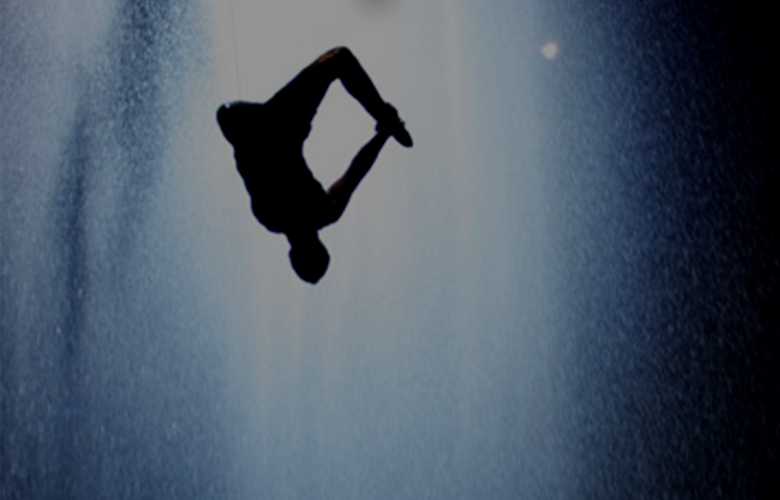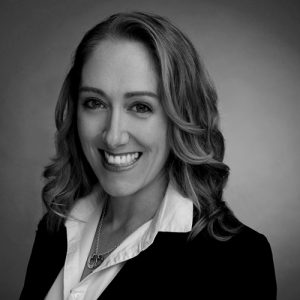
“Evolution in circus will see itself regularly revisiting the past, learning from it and making changes and embellishments.” – Bryan Donaldson: Owner/Director of High Performance Productions
Bryan has spent his entire career in live performance beginning as an actor and a professional magician and evolving into an aerial and acrobatic circus artist specializing in corde lisse, flying trapeze, balance perch, adagio, Russian swing, the wheel of death and casting cradle. Bryan travelled the world as an aerial artist and rigger with touring circus companies establishing an accomplished and respected reputation. In 2003, he founded High Performance Productions and has since become a highly acknowledged practitioner, consultant and teacher in the world of circus and performer rigging – flying stars such as Rihanna, Kevin Spacey and Lady Gaga. Bryan kindly took some time out to answer for TheatreArtLife a few questions about his career and the industry he has spent his life in.
I don’t really miss performing as such, I’m still very much involved with the same business which gives me a fix of sorts, not quite the same buzz you’d get when receiving applause but still very satisfying.
The transition from performing to running the rigging business wasn’t an overnight thing, it happened gradually and in an organic kind of way.
I’d been consistently touring for 13 years at the point where I started High Performance, I carried on touring and performing aerially on a smaller scale for another 3 years but doing more ‘one off’ type of corporate events and Christmas seasons for those last 3 years. At the same time, my friend Joe Hull (who I’d met for the first time in 2000) and I decided to have a go at setting up a Circus rigging company. I’d always done my own rigging as an artist and realised there were many more new people coming into the business as aerialists that didn’t have any rigging experience and thought there was an opportunity or ‘niche’ type opening to set something up, mainly for events. I was always a self-employed type, even when working as an artist on tour, responsible for paying my own taxes, promotions etc. so from a business perspective, the transition was very natural.
Marketing was something Joe and I talked about occasionally. We started off by getting cards printed and a logo designed. After that, I taught myself how to network online and build a site.
This was way back when the internet was just a new thing, don’t forget! Facebook didn’t exist, I had a group on MSN in the late 90’s for the performance work as part of Duo Vertigo and learnt from there really. Most people didn’t have a laptop and smart phones weren’t even invented.
We relied on word of mouth. It wasn’t until the mid 2000’s that I registered domain names and had a VERY basic site. We’ve done nothing since in all honesty!
Since Facebook, we’ve built a modest following but still to this day the majority of our work is as a result of recommendation.
Casting cradle was definitely my favourite. It’s a discipline that’s highly respected in the circus community as being one of the most difficult acts. It’s physically very demanding and difficult to get right as an act from a performance and technical point of view. Most cradle catchers have serious knee injuries, as did I! I ruptured both my anterior and posterior cruciate ligaments in one leg during the learning process. It took over 2 years of rehabilitation (and surgery) before I managed to come back. My other disciplines included magic and illusion, wheel of death, fire, comedy, solo Russian swing, corde lisse, balance perch and catching on the flying trapeze.
Yes! Absolutely. It constantly amazes me how quickly and to such a high technical level that is evolving and has evolved. Every 4 years we see the Olympics and I’m consistently amazed at how athletes have pushed things further, doing bigger and better tricks. But, having said that, much circus is largely now about technical ability and the tricks, I feel the artistic side has taken a bit of a back seat now over production values and technical ability.
I personally believe that everything is about cycles. Evolution in circus will (and should) see itself regularly revisiting the past, learning from it and making changes & embellishments. Improvements are subjective, it’s about change, keeping things fresh & relevant.
I had a period where I was designing and building new equipment. This was during the mid 2000’s when we had a workshop at the Circus Space and used to fabricate equipment onsite. There were regularly students coming up with new ideas, it was interesting but the reality was there was no money it so I stopped production eventually. It’s sad in a way, I enjoyed the creativity but there was nothing in the way of subsidies that were substantial enough for the students that made it feasible for my continuation. I’d learnt to weld whilst on tour and built a flying rig with a friend who was experienced in welding. I gained enough knowledge and confidence during that period to know what would work and what was safe in the way of acrobatic and aerial fabrication.
Nearly every high wire installation that we’ve been involved with has been on my favourites list. More recently was a job for an upcoming major circus based film. It’s still in the early stages and non-disclosure documents have been signed so that’s all I can say about it right now!
Yes, the courses at this stage (and up until now) have been personally run by me. I do enjoy teaching, in a narcissistic kind of way it fulfils a bit of the gap since I stopped performing! I enjoy teaching though from a deeper level, imparting the knowledge from a safety perspective is imperative. There’s no need to keep the secrets of circus ‘secret’ anymore, it’s for all. Some riggers were concerned that I’d be taking work away from them by teaching my course, what it has done however is raise awareness of limitations and created more work for us all.
Difficult to say really! I feel very real pressure for high wire installations. Considering most of the wire walkers we work with prefer to work without any type of safety, the stability of the rig (and anchor points) are imperative. Any slipping or failure of anchors could throw them off.
There are various training courses that go towards the UK legal requirement of being able to demonstrate competence. Firstly, is your own ability to be able to work safely at height, so a rope access and rescue course is pretty important. Then there’s the equipment, and by this, I mean the lifting gear, personal protective equipment and access plant. There are a few suppliers that run training courses on PPE equipment inspection and utilisation, then in the UK the Lifting Equipment Engineers Association (LEEA) provide thorough training and certification and the International Powered Access federation (IPAF) provide MEWP training, scissor lifts etc.
Retain the knowledge and feeling you had as a performer, impart this on a technical level when working with artists in the future to reassure them of their safety through the fact that you care & know what they’re experiencing!
Dani Bellar Pilukas: Principal Show Programmer For Walt Disney Imagineering
Touring With Cirque Du Soleil: Tanya Burka


Anna Robb is Co-Founder and Managing Director for TheatreArtLife. Anna is an experienced Producer/Production Stage Manager. Her 20-year work history spans Asia Pacific, the Americas, Africa, the Middle East and Europe. She has worked for companies such as Cirque du Soleil, Franco Dragone Entertainment Group, Christie Digital Systems and The Sydney Opera House. Anna was an integral part of the research and development, training and formation, creation and operation of the 250 million dollar aquatic show, The House of Dancing Water in Macau. She also maintained the daily operations of this complex show as the head of Stage Management for 7 years. Anna has been employed on over 70 shows in the areas of concerts, arena events, corporate events, trade shows, musical theatre, plays, dance, circus, outdoor festivals and mega shows. Anna holds a honours degree in Design for Theatre and Television and is passionate about the evolution of the industry.
Read Full Profile© 2021 TheatreArtLife. All rights reserved.

Thank you so much for reading, but you have now reached your free article limit for this month.
Our contributors are currently writing more articles for you to enjoy.
To keep reading, all you have to do is become a subscriber and then you can read unlimited articles anytime.
Your investment will help us continue to ignite connections across the globe in live entertainment and build this community for industry professionals.